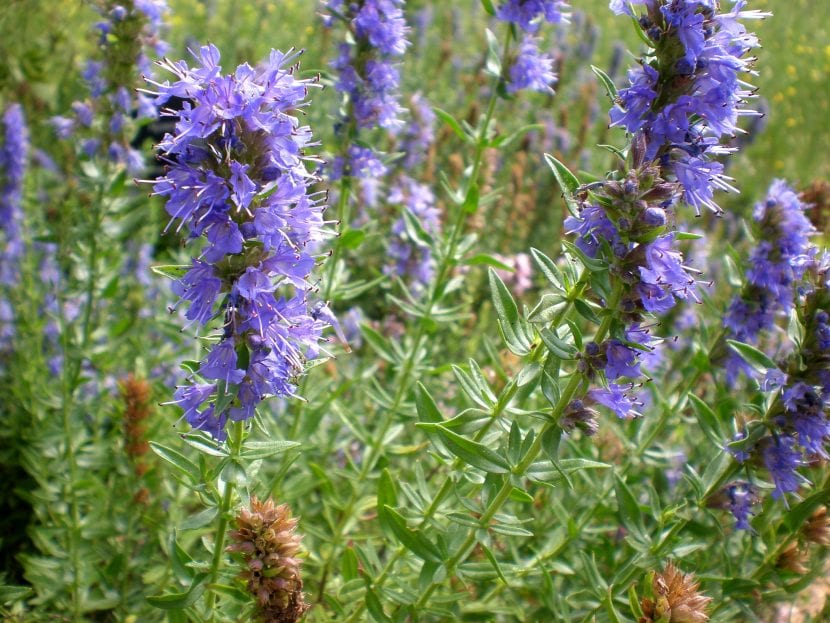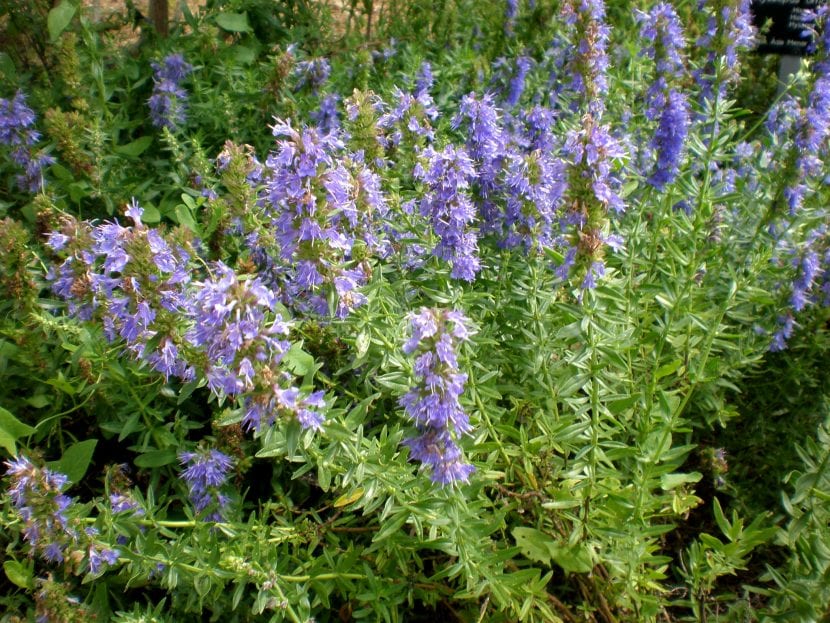
The plant known by the scientific name Hyssopus officinalis It is one of the herbs that cannot be missing in any garden or patio, not only because it is beautiful, but also because it has very interesting medicinal properties.
As if that were not enough, it does not need much care, to the point that I can say that it is suitable for beginners. Do we know it? : )
Origin and characteristics

Our protagonist is a herbaceous native to southern Europe, the Middle East and the coasts of the Caspian Sea whose scientific name is, as we said, Hyssopus officinalis. It is popularly known as hyssop, and it is a lively subshrub plant -lives several years-, which reaches a height of 30 to 60cm. Its stems lignify from the base, and from there many straight branches sprout.
The leaves are opposite, entire, linear to lanceolate, sometimes pubescent on both sides, dark green in color and 2 to 2,5 cm long. The flowers are grouped in fragrant inflorescences terminal spike-shaped pink, blue or white, during summer. The fruit is shaped like an achene (dried fruit whose seed is not attached to the skin or peel thereof) oblong.
What are their cares?
If you want to have a copy, we recommend that you provide it with the following care:
- Location: outside, in full sun.
- Earth:
- Pot: universal growing substrate mixed with 30% perlite.
- Garden: chalky, with good drainage.
- Irrigation: 3-4 times a week in summer (more if the environment is very dry and hot -35ºC or more-), and every 5-6 days the rest of the year.
- Subscriber: from early spring to late summer with ecological fertilizers, once a month.
- Multiplication: by seeds in spring. Direct sowing in seedbed.
- Planting or transplanting time: in spring. Change pot every 4-5 years.
- Harvest:
- Leaves: from spring to autumn. They can be frozen so that they do not lose aroma.
- Flowers: in summer. They must be put to dry in a shady place without ventilation.
- Rusticity: withstands cold and frosts down to -5ºC.
What uses does it have?

In addition to being used as an ornamental plant, it has other uses that should not be ignored:
- Medicinal: it is used against coughs, bronchitis, constipation and also to gargle when our throat hurts. It is used in infusion.
- Culinary: both the leaves and the flowers have a bitter and spicy taste, and are used to flavor salads, marinades, mushrooms and vegetables; and to add them to soups, stews or casseroles.
What did you think of the Hyssopus officinalis?